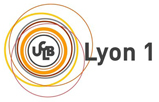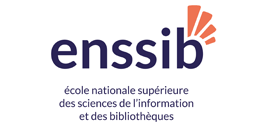Machine learning, données textuelles et recherche en sciences humaines et sociales
| Quand ? |
Du 25/11/2019 à 09:00 au 26/11/2019 à 18:00 |
|---|---|
| Où ? | ENS de Lyon, site Buisson, Salle D8.001 |
| Ajouter un événement au calendrier |
|
On assiste depuis quelques années à une explosion des usages de l’apprentissage automatique, notamment due aux progrès spectaculaires rendus possibles par l’apprentissage profond. Cette explosion s’accompagne d’un double déplacement de ces techniques des milieux académiques vers les milieux industriels : non seulement le secteur marchand s’est approprié ces techniques pour construire des services à destination de ses clients, mais il a également su s’approprier le leadership dans la recherche sur l’apprentissage automatique.
A travers ces deux journées d’étude, nous souhaitons interroger et stimuler un déplacement inverse : les données textuelles ayant reçu une attention particulière lors des développements récents de l’apprentissage profond, quels sont pour les sciences humaines et sociales les usages, existants ou possibles, de ces techniques d’apprentissage ?
Organisateurs :
Marianne Reboul, Jean-Philippe Magué, Pierre Borgnat
Programme :
Lundi 25 novembre
13h30 : Accueil
14h-15h :
Thibault Clérice École nationale des chartes
Deep learning et humanités : entre score et application
Le développement d'outils en apprentissage profond est toujours évalué de la même manière. Loin de vouloir réformer cette méthode, et en réintroduisant ses grands principes de reproductibilité, nous nous proposons même d'en réaffirmer l'importance. Cependant, à travers une série de cas pratiques, nous réfléchirons à l'importance des scores et données utilisées en apprentissage profond, en particulier dans les humanités. Relation entre sets de données, préparation de corpus, toutes ces étapes peuvent infléchir grandement les résultats d'une analyse finale.
Julien Velcin Laboratoire Eric - Université Lyon2
Analyzing the informational landscape with AI
Analyzing the complexity of our informational landscape is almost untractable without using advanced machine learning and NLP techniques. Several powerful algorithms have been designed to "digest" this huge amount of information by building efficient categorization schemes. However we have to take care of the consistency of those schemes for them to be accepted by the end user of our system. It is especially the case for researchers in social sciences and humanities. In this talk I will present such a collaboration with researchers who are working on media studies and aim at studying the "mediascape" that grounds most of our understanding of the outer world today. This work has been developed in the project "Journaliste à l'ère du Numérique", in close collaboration with J.C. Soulages (centre M. Weber, Univ. Lyon 2).
16h-16h30 : pause
16h30-17h30:
Mathieu Valette Équipe de Recherche Textes, Informatique, Multilinguisme - INALCO
La linguistique, une science des textes à l'interface de l'apprentissage automatique et des SHS ?
Lorsqu'il a eu à traiter de grands volumes de données textuelles, à partir des années 2000, le Traitement Automatique des Langues (TAL), jadis fortement adossé à la linguistique, s'en est détaché alors que ses objets, les textes, relèvent a priori du champ d'intervention des sciences du langage. Même dans l'industrie, où longtemps les approches symboliques d'inspiration linguistique (logico-grammaticales) étaient préférées, les méthodes d'apprentissage ont progressé au point de régner quasi sans partage aujourd’hui. Pourtant, lorsqu’elle était promotrice du structuralisme, la linguistique était considérée dans les années 60 comme la "discipline pilote" des sciences humaines ; elle pourrait prétendre aujourd’hui au statut de "science pivot" si elle proposait de nouvelles théories de la textualité à l'interface des SHS et des méthodes d'apprentissage. Notre propos sera ici d'explorer la possibilité d'une telle linguistique – science des textes et discipline pivot des SHS, à partir d'une part, d'une discussion sur le statut des données textuelles en linguistique et en apprentissage et d'autre part, de quelques exemples d'application en fouille de textes.
Mardi 26 novembre
8h30h-9h : accueil
9h-10h :
Eric de la Clergerie Almanach - Inria
Évolutions et pertinence des plongements lexicaux
Les plongements lexicaux (word embeddings) sont maintenant devenus incontournables dans le domaine du traitement automatique des langues (TAL), avec des évolutions très importantes sur ces dernières années. Je retrace ces évolutions dont partant de travaux anciens s'appuyant sur l'hypothèse distributionnel de Harris, remis au goût du jour avec Word2vec, et devenu matures avec les embeddings contextuels comme Elmo ou Bert. Nous observons de plus un élargissement de cette notion de plongement en dehors du cadre strict des mots (sens, phrases, documents, graphes, ...)
10h-11h :
Taylor Arnold University of Richmond, Collegium de Lyon
Studying Visual Style in American Television
In this presentation, I show how face detection and recognition algorithms, applied to frames extracted from a corpus of moving images, are able to capture many formal elements present in moving images. Locating and identifying faces makes it possible to algorithmically extract time-coded labels that directly correspond to concepts and taxonomies established within film theory. Knowing the size of detected faces, for example, provides a direct link to the concept of shot framing. The blocking of a scene can similarly be deduced knowing the relative positions of identified characters within a specific cut. Once produced on a large scale, extracted formal elements can be aggregated to explore visual style across a collection of materials. It is then possible to understand how visual style is used within the internal construction of narrative and as a way to engage broadly with external cultural forces. The talk will focus on the application of our techniques for extracting formal elements to a corpus of moving images containing every broadcast episode of two Network Era sitcoms
11h-11h30 : Pause
11h30-12h30 :
Angelo Mario Del Grosso Institute of Computational Linguistics “A. Zampolli” ILC-CNR, Pisa
Multilingual Word-by-word alignment. Methodology and some preliminary outcomes towards the construction of multilingual Lexicon within the “Traduzione del Talmud Babilonese” project.
Textual scholars have been exploiting for long time multilingual resources in their daily work to better understand the primary sources they inquire. Bitexts are parallel texts which turn out to be useful in a number of cross-linguistic and comparative processing tasks. This talk will show the workflow adopted within the research activities conducted on the Italian translation of the Babylonian Talmud. More specifically, I will illustrate the ongoing work towards the construction of a multilingual Hebrew/Aramaic/Italian terminological resource by means of stochastic generative approaches to word-by-word text alignment.
The related literature discusses plenty of techniques concerning this topic. The alignment tool I developed is grounded on generative models (i.e., IBM and HMM models), which are a collection of non-supervised machine learning algorithms, to calculate the probability of linking two words in a multilingual term pair.
From a technical standpoint, beside the adopted models, which are based on an alignment function and on an unsupervised training procedure devoted to estimating the unknown probability distributions, other machine learning approaches to word alignment exist that encompass discriminative techniques, which are based on a target function and on a supervised learning process exploiting labeled training data set.
The implemented models were widely adopted in the literary domain, as they are able to profitably handle interpretative bitexts modeling also deletion, insertion, transposition phenomena without having an extant labeled data set.
The workflow I will present encompasses four distinct phases: 1) The encoding of the parallel text, which has been carried out according to the last TEI recommendations. In particular, the linking-target approach described within the Module 16 of the guidelines was used. 2) The semi-automatic extraction of the Italian terms, which has been carried out by means of linguistic analysis technologies available at the Institute of Computational Linguistics (ILC-CNR). These tools include a stochastic component for terminology extraction. 3) The addition of Hebrew/Aramaic terms to the Italian extracted ones via word-by-word alignment to automatically process the three main ancient languages appearing in the Talmud, namely mishnaic Hebrew, biblical Hebrew and babylonian Aramaic. 4) Finally, the revision of the obtained results through an ad-hoc implemented web-based application. This final step is devoted to build a ground truth and/or a gold training set allowing us to perform a complete validation process of the alignment outcomes.
For the time being, 219.000 tokens have been analyzed, extracted from four tractates of the Babylonian Talmud which were translated so far."










